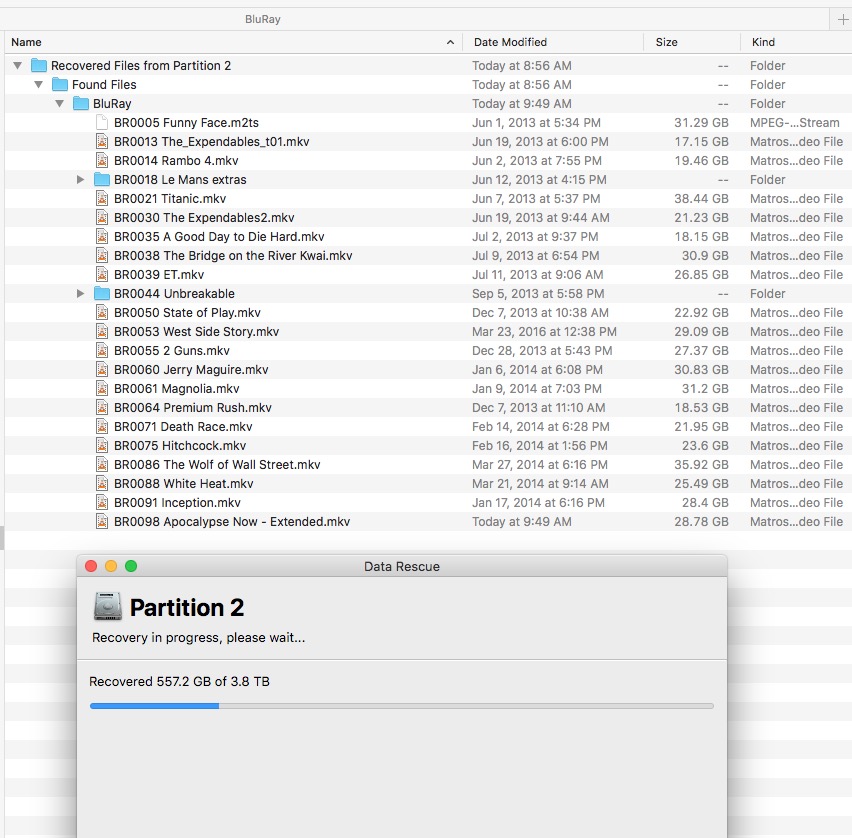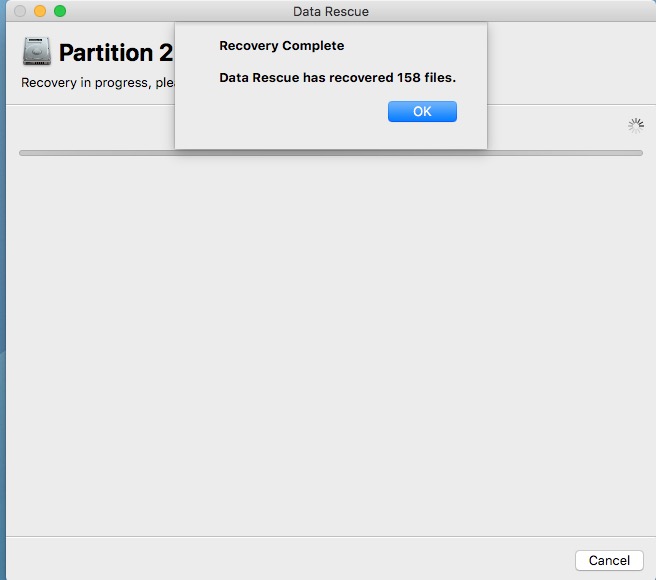150 Blu Ray movies recovered.
One of the most frustrating aspects of Mac desktop computer ownership is Cupertino’s planned obsolescence policy, one which manifests itself in the endless – and mindless – ‘upgrades’ to the OS X operating system. These provide ‘features’ no one needs and ensure that old application versions cease working.
My movie HDD boxes, which contain some 20GB of movies plus 20GB of back ups had one of the 4 TB hard drives fail so I quickly procured a replacement and set to restoring it from the backup drive. The only snag is that the backup refused to mount on my desktop 2010 Mac Pro. Panic.
I fired up Disk Drill only to be told that my version of Disk Drill was outdated and required updating. I did as instructed only to be told after the update that now my OS was outdated and required updating. Some idiot at Disk Drill decided to share this requirement after the point of no return because, dear reader, I cannot update High Sierra as that’s as high as my Mac Pro will go without resorting to aftermarket hacks, something I very much do not want to do. I’m on OS X High Sierra, 10.13.6.
But I happened to have the old version of Disk Drill running on another Mac Pro so I inserted the apparently faulty backup disk in that machine, being sure to update nothing, and after 72 hours (!) Disk Drill told me it could maybe recover 15 of the 150 Blu Ray movies somewhere on that drive. Useless. I did run the recovery process out of curiosity and the recovered movies were but cut outs of the whole thing. Doubly useless. Yes, I know, Disk Drill will tell me how superior the latest version is but if they could also explain how I can actually run the thing I would be deliriously happy. So hasta la vista to another failed product, due to the raw stupidity of the developer.
I checked around for other recovery apps, suspecting that all that was wrong with my back up drive was a corrupted or lost file directory, as the disk was spinning away happily even though it would not mount in Disk Utility, and chanced upon Data Rescue which comes in both Mac and Windows versions. The Mac version is stated to work with OS 10.12 (Sierra) and later, so I downloaded a copy and ran ‘deep scan’ on the back up drive. A day later, lo and behold, all 150 movies were disclosed – even with the drive not mounted – and Prosoft hosed me down for $99 for a ‘single disk recovery’ version which I fired up immediately.

Data Rescue ‘deep scan’ gets under way.
$99 is a whole lot less than re-ripping 150 files whose average size for a Blu Ray movie is some 27 GB. 9 hours and fifteen minutes later I had the new WD HDD full with 149 of the 150 Blu Ray movies. Just one had gone AWOL. Checking a handful showed the content to be full and uncorrupted and the new disk drive was back in service, allowing us to watch Hitchcock’s ‘To Catch a Thief’ in all its glory on the 120″ home theater screen.

Data Rescue has recovered almost everything some 9+ hours later.
As for inflation, the last WD Red 4TB drive I bought 6 years ago ran me an inflation adjusted $183, whereas the new one was just $75. Not everything inflates in price! I use 5400rpm Western Digital drives; the 50% premium for 7200 rpm drives is money wasted for this application. Also, the less costly SMR drives are just fine. CMR is not needed in this simple use scenario. The differences are explained here.
So, if you are on Sierra or later then Data Rescue is recommended, based on my experience.
As for hard drives, statistically significant data (meaning thousands of samples) confirm that Western Digital drives, especially the ‘Red’ version, are far more reliable than those from competitor Seagate by a factor of 2x and, as luck would have it, the failed drive – it was completely locked up and would not spin – was a Seagate. So I’m sticking with WD in future.